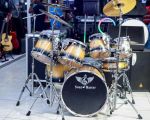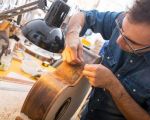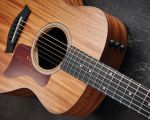Essential Woodwind Accessories for School Bands
As a musician, I’ve come to realize that playing an instrument isn't just about mastering technique—it's about having the right tools. And when it comes to woodwind instruments, the right accessories are essential for enhancing both the sound and the longevity of your instrument. If you're a member of a school band, you know how important it is to have the best equipment at your disposal. Whether you're a beginner or a seasoned player, having the right woodwind accessories can make a world of difference in your performance.
1. Reeds: The Heart of Your Woodwind Sound
When it comes to woodwind instruments like clarinets, saxophones, and oboes, reeds are by far the most crucial accessory. They are the very source of your sound, and having the right reed can elevate your performance. I remember when I first joined my school band, I underestimated how much of a difference a quality reed could make. I used to grab any reed off the shelf, but once I started using high-quality reeds, my sound became smoother and richer.
There are many types of reeds available, and each woodwind instrument has its specific size and type. For instance, clarinet reeds come in various strengths, usually ranging from 1 to 5, with 3 being a common choice for most players. Beginners might find a softer reed (around 2) easier to play, while more advanced musicians might prefer a harder reed for more control and a fuller sound.
It's important to experiment with different reed brands, as each one can bring a different tonal quality. Reeds like Vandoren and Rico are popular among woodwind players, but ultimately, it’s about finding the reed that suits your playing style best.
2. Cleaning Supplies: Maintaining Your Instrument’s Longevity
Woodwind instruments require regular cleaning to maintain both their functionality and sound quality. One of the best investments I made as a young musician was in a set of cleaning supplies. The humid environment created by the moisture in your mouth can cause buildup inside your instrument, potentially damaging it or affecting the sound quality.
For clarinets, you’ll need a good-quality swab to clean out the moisture from the body of the instrument. Swabs come in different types, but I recommend a silk swab for its ability to absorb moisture effectively without leaving behind any residue. Saxophone players should also invest in a swab to clean the inside of the neck and body after each use. Neglecting these cleaning habits can lead to sticky pads, blocked key mechanisms, or worse—an unpleasant, muffled sound.
Don’t forget to clean your mouthpiece regularly! A mouthpiece brush is a must-have for anyone who wants to keep their instrument in top shape. A clean mouthpiece ensures that your air flows smoothly and the reed vibrates freely, allowing you to produce a cleaner, more consistent sound.
3. Cork Grease: Preventing Wear and Tear
Another accessory that many woodwind players overlook is cork grease. Whether you're playing a flute, clarinet, or saxophone, cork grease is essential for maintaining the cork joints in your instrument. It creates a smooth, easy fit between parts, preventing air leaks and ensuring the instrument plays at its best.
Without cork grease, the corks on your instrument can dry out, crack, or become stiff, which makes assembly difficult and can even cause damage to the instrument. I learned this the hard way in high school when I didn’t apply cork grease regularly—my saxophone’s joints started sticking, and it took me much longer to put my instrument together before every practice. Since then, I’ve made sure to apply a small amount of cork grease before every session.
4. Neck Straps and Harnesses: Comfort and Support
Playing woodwind instruments can sometimes strain your body, especially during long rehearsals or performances. As a saxophone player, I quickly learned the importance of a neck strap. A good neck strap can relieve the pressure on your neck and shoulders by distributing the weight of your instrument evenly. This makes playing for extended periods far more comfortable.
There are various types of neck straps, and what works best for you will depend on your comfort preferences. I personally prefer padded neck straps as they provide extra comfort. Some neck straps are adjustable, allowing you to find the perfect fit, while others offer additional padding to reduce strain. For those who play heavier instruments like the baritone saxophone, a harness can be a better option, as it offers more support by distributing the weight across your torso.
5. Mouthpieces: The Foundation of Your Sound
The mouthpiece is another critical component of your woodwind instrument that can significantly impact your sound. A high-quality mouthpiece allows you to achieve a smoother, more resonant tone. There are countless mouthpiece options for various instruments, so it's essential to find one that complements your playing style and sound preferences.
For example, saxophonists often use different mouthpieces for classical or jazz styles. The shape of the mouthpiece, the material it’s made from, and the facing length can all influence the tone. Clarinet players may experiment with different types of mouthpieces to achieve the ideal sound quality, depending on the type of music they’re playing. I remember when I switched to a better quality mouthpiece for my clarinet, I noticed a significant improvement in both the tone and the ease of playing.
6. Instrument Cases: Protecting Your Investment
Finally, one of the most important woodwind accessories, especially for school band members, is a good-quality instrument case. Whether you’re traveling to and from school, rehearsals, or performances, a sturdy case will protect your instrument from bumps, scratches, and environmental factors.
When I was in high school, my case saved my instrument multiple times from accidental drops or knocks. A solid case can also help you organize your accessories, such as reeds, mouthpieces, and cleaning supplies, all in one place. Be sure to invest in a case that offers ample protection and keeps your instrument secure during transport.
Conclusion: The Best Accessories for Every Woodwind Musician
Every woodwind player, especially those in school bands, will benefit from these essential accessories. From the right reeds to the perfect mouthpiece, these tools enhance your sound, comfort, and overall experience as a musician. I encourage you to experiment with different accessories and find what works best for you. Trust me—having the right equipment makes all the difference in your performance and helps you enjoy playing your instrument even more!








